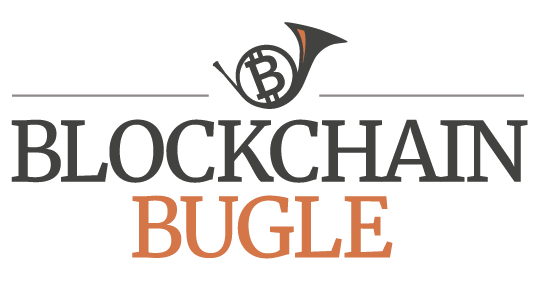Features From the Most Popular Altcoins Are Planned for Bitcoin

For many people involved with Bitcoin, altcoins are nothing more than testnets. Hundreds of digital currencies are currently listed on CoinCap.io, but Bitcoin still dominates 78 percent of the market. In total, there are only 10 digital currencies with a current market cap of $10 million or more.
When looking at the most popular altcoins, it’s easy to see that there are some cryptocurrency features that are more desirable than others. Many have said that any altcoin with useful features will eventually see those features incorporated into Bitcoin. Up to this point, it’s clear that many of the most popular altcoins contain features that are similar to new improvements that are planned for Bitcoin.
It should be noted that Ripple will not be included in this list as it fits the archetype of a permissioned ledger more than an open, permissionless blockchain.
Ethereum
Ethereum is the most successful altcoin in the history of digital currency ‒ at least when measured as a percentage of Bitcoin’s overall market cap. It was the second altcoin to ever reach a $1 billion market cap (after Litecoin).
The main selling point of Ethereum is that it is a platform for smart contracts and decentralized applications. These sorts of applications have long been talked about as a sort of “Bitcoin 2.0.”
Bitcoin Alternatives: There are a variety of ways in which Ethereum-esque applications could make their way to Bitcoin:
- Rootstock is a smart contract platform with similar goals to Ethereum. In fact, it is partially based on the combination of the Bitcoinj and Ethereumj clients. RSK Labs intends to implement the Rootstock project as a sidechain to Bitcoin; this means, while operating on a separate blockchain, Rootstock would exist in the Bitcoin currency network.
- Segregated Witness enables many new improvements to Bitcoin. One such improvement is the ability to more easily upgrade Bitcoin’s scripting language. At this year’s MIT Bitcoin Expo, Blockstream Core Tech Engineer Mark Friedenbach stated, “We could do something like Ethereum script, which is drastically different from Bitcoin script.” It should be noted that there currently do not appear to be any concrete plans to bring Ethereum script to Bitcoin via this method.
- Some Ethereum-based applications can also make their way to Bitcoin on their own. In this sense, a specific application is enabled on Bitcoin rather than the entire Ethereum platform. The best example here is Bitcoin Hivemind. This project is the brainchild of former Yale statistician Paul Sztorc, and it’s a blockchain-based prediction market. A similar project, Augur (also mostly based on Sztorc’s work but without his support), is one of Ethereum’s most highly anticipated applications.
- It’s possible that many of Ethereum’s use cases can also be implemented on Bitcoin via multisig. This has been former Bitcoin Core lead maintainer Gavin Andresen’s stance on Ethereum for quite some time. In a recent AMA on Chinese Bitcoin community website 8btc, Andresen stated, “I think most of the interesting things you can do with Ethereum you can also do with multi-signature Bitcoin transactions.”
It should be noted that the use of Bitcoin on Ethereum was also recently enabled via BTC Relay.
Dogecoin and Litecoin
Dogecoin and Litecoin are two different digital currencies that are mostly used for low-value, low-security transactions. According to CoinGecko, these are the two most popular altcoins besides Ethereum. Although the Litecoin market cap was once over $1 billion, it currently sits below $200 million.
Bitcoin Alternatives: Sidechains and layer-2 protocols, such as the Lightning Network, are Bitcoin’s main alternatives to Dogecoin and Litecoin ‒ at least in terms of low-security, cheap alternatives to the Bitcoin blockchain. Of course, it should be noted that there may not be much of a security tradeoff in the case of the Lightning Network. These are still Bitcoin transactions.
Blockstream CTO Greg Maxwell and Bloq co-founder Jeff Garzik recently shared countering viewpoints (here for Maxwell and here for Garzik) on which solution will work best for Bitcoin. It would be impossible for Bitcoin to replace Litecoin as the “silver to Bitcoin’s gold,” but this is more of a marketing term than anything involving an actual use case.
Dash and Monero
Although they have different communities and features, the main selling point for both Dash and Monero is better privacy. Dash is currently the more popular altcoin on the market, although Bitcoin Core contributor and security researcher Peter Todd has publicly noted his preference for Monero. These two altcoins could face increased competition from the upcoming launch of Zcash.
Bitcoin Alternatives: Better privacy has been a topic of conversation in the Bitcoin community for a long time. Implementing CoinJoin in Bitcoin Core has been discussed on the GitHub repository since 2013, although the conversation has gained new life in recent months ‒ in large part thanks to JoinMarket.
Confidential Transactions is a proposal that would greatly improve the level of privacy in Bitcoin transactions by encrypting the amounts involved.
It’s possible that something like Confidential Transactions could be tested on a sidechain before being implemented on the main Bitcoin blockchain. This feature is already available on Blockstream’s Elements Alpha testnet sidechain. Some members of the Blockstream team have also expressed their excitement regarding the prospect of a zerocash sidechain.
Plenty of Work Still to Be Done
Although it appears many of the most popular features of altcoins will eventually find their way into Bitcoin, it’s important to remember that these are still very much works-in-progress. Segregated Witness, which is currently being tested and reviewed in the form of a pull request to Bitcoin Core, is a big step forward for these sorts of changes, and BIP 9 (Version Bits) should also be helpful as a new method of deployment for soft forks.
Sidechains could be another major step forward ‒ eventually. The discussion as to how this functionality will be added to Bitcoin was recently started on the Bitcoin development mailing list by Sztorc. Rootstock plans to launch via a federated peg model at first, and it’s still unclear exactly when a decentralized, 2-way peg will be possible with Bitcoin.
Greg Maxwell recently provided an update on the current status on sidechains from Blockstream’s perspective.
The post Features From the Most Popular Altcoins Are Planned for Bitcoin appeared first on Bitcoin Magazine.


